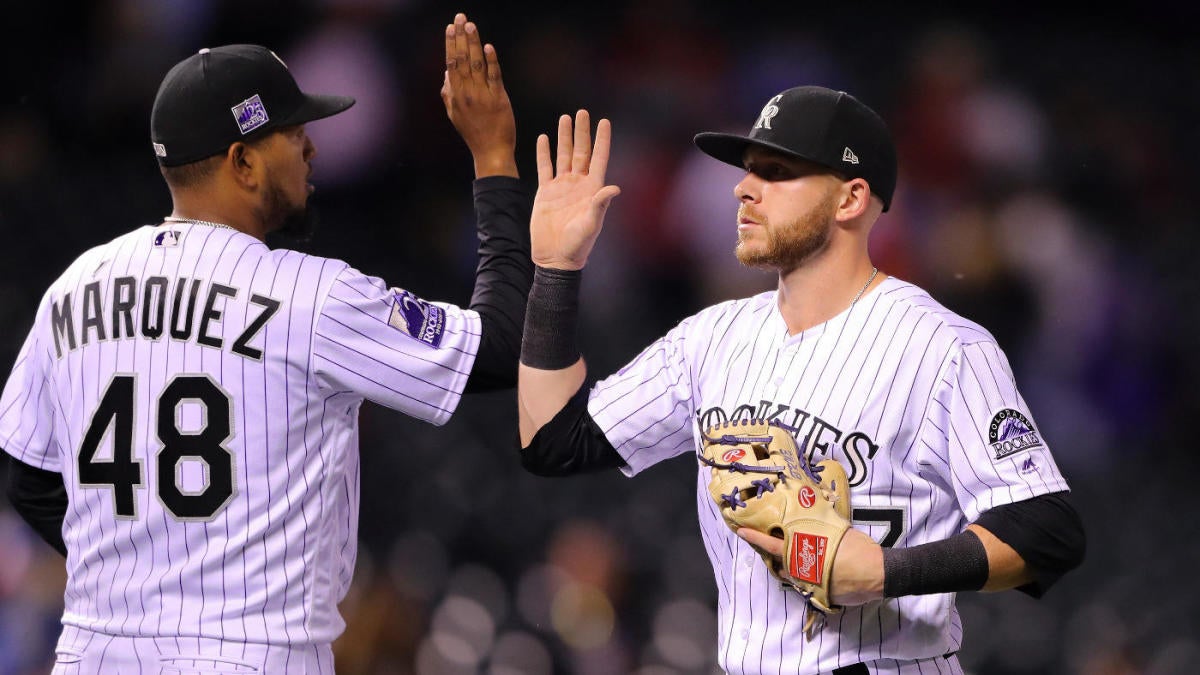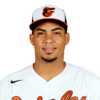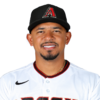
Opening Day is one week away and it is never too early to look ahead to the midseason trade market. The trade deadline moves back to July 31 this year, its usual date, and August waiver trades were eliminated a few years ago, remember. July 31 is a hard deadline. If you want to improve your team for the stretch run, that’s your last day to do it.
With any luck the trade deadline will be much more normal than last year’s trade deadline or this past offseason, when teams were still reeling from the pandemic and dealing with much uncertainty about the 2021 season. We now know most teams will have some fans in attendance on Opening Day, with the expectation capacity will be increased in the coming months.
Because there is no expanded postseason field this year, more teams will be out of the race come July, which could (should) create a more active trade market. You’ll have more teams willing to sell and, in theory, contenders will feel more urgency to solidify their place in the postseason bracket. Last year’s deadline was pretty slow. This year’s should be more active.
With that in mind, here is our super-early 2021 trade deadline preview. These are 20 players we expect to be available come the deadline, ranked in order of how likely they are to be moved and how attractive they are to potential trade suitors.
The Rockies have already ripped away the band-aid with Nolan Arenado, and it only makes sense to trade Story now. It actually makes more sense to trade Story than it did Arenado because Story will become a free agent after the season, and an extension seems unlikely. Arenado was at least locked up long-term (though his opt out loomed). What’s done is done.
Story is on the short list of the best all-around players in the game. He’s a high impact shortstop who hits dingers, steals bases, and is a sneaky-excellent defender. The Coors Field factor will create questions about his true offensive talent level, but not enough to derail a trade. Even as a rental, Story will be the No. 1 position player on the trade market this summer.
Since Colorado is in teardown mode, the team might as well listen on Marquez too. He’s very good and he’s signed affordably though 2024. Truth be told, Marquez is the club’s most valuable trade chip, not Story. He’s young, he’s cheap, and he’s very good. GM Jeff Bridich wouldn’t be doing his job if he didn’t listen to offers for Marquez, who’d be the most sought after starter at the deadline.
The Rockies have a few others who would be attractive at the deadline, including starters Kyle Freeland and Jon Gray, and reliever Daniel Bard. Charlie Blackmon’s contract is onerous and the money is may not be something that can be negotiated under the crunch of the deadline. I think Blackmon is an offseason trade candidate more than an in-season trade candidate.
The Cubs cut payroll early in the offseason (Yu Darvish trade, Kyle Schwarber non-tender) then pivoted to adding payroll later in the offseason (Pederson, Jake Arrieta, Trevor Williams, etc.). They’re good enough to win a weak NL Central, in which case subtracting players at the deadline is unlikely. This is also a high-variance roster that could be 10 games out come July.
Bryant has been a regular in trade rumors the last two seasons and it’s put up or shut up time. He’ll become a free agent after this season and there are zero indications extension talks are forthcoming. The Cubs can either trade Bryant at the deadline, or keep him and try to win in 2021, and possibly (likely?) lose him as a free agent and get nothing but a draft pick in return.
Pederson is on a cheap one-year contract and is exactly the kind of productive veteran bat who gets moved every trade deadline. If the Cubs are out of the race, Joc’s an obvious trade candidate. Willson Contreras could go as well, though keeping him through the deadline is justifiable because he will remain under team control in 2022. No reason to rush out and trade a good catcher.
Javier Baez and Anthony Rizzo are impending free agents and that theoretically makes them trade candidates, though they seem more likely to sign extensions than Bryant. I don’t have them as trade candidates just yet. Arrieta, Williams, Zach Davies, and even Craig Kimbrel are other possible trade candidates (with varying degrees of trade value).
It’s starting to feel like a matter of “when” the Brewers will trade Hader, not “if.” He is getting expensive through arbitration (Hader will earn $6.675 million in 2021) and his salary could top $10 million as soon as 2022. Spending eight figures on a reliever, even one as good as Hader, probably isn’t in the cards for the small-market Brewers.
Milwaukee could contend this season and that could interfere with a midseason trade, though we’ve seen contending teams trade away key players while in pennant races, most notably Cleveland with Trevor Bauer and Mike Clevinger. The Brewers themselves traded David Phelps to the Phillies, a team they were battled for a postseason spot, at the deadline last year.
There is a recent history of teams paying big to get elite relievers at the deadline (the Yankees turned Aroldis Chapman and Andrew Miller into Clint Frazier, Gleyber Torres, and others in 2016) and the acquiring team would get Hader for three postseason runs rather than two at the deadline. All it takes is one desperate team to get a Godfather package.
The Brewers have a strong bullpen with a ready-made closer replacement in Devin Williams (don’t sleep on Drew Rasmussen as this year’s breakout reliever), so while subtracting Hader would hurt, he’s not irreplaceable. Don’t be shocked if the Brewers deal Hader even while they’re in the race this year. There could be an offer that’s just too good to refuse.
Back in December, The Athletic’s Ken Rosenthal reported Gallo has been available since at least last year’s trade deadline. He is coming off a poor 2020 and he won’t become a free agent until after 2022, so the Rangers would be smart to give Gallo a chance to rebuild his stock before shipping him away. If that means keeping him through the entire 2021 season, so be it.
The Rangers aggressively reshaped their roster and emphasized youth over the winter (Elvis Andrus, Lance Lynn, Rafael Montero, and others were traded away), and it stands to reason the just turned 27-year-old Gallo would be part of that youth movement. He is a flawed hitter, no doubt, but his power is outrageous and he’s a very good defender. Gallo isn’t a one-dimensional masher.
A long-term extension is a legitimate possibility. I think there will be enough interest in Gallo at the deadline — contenders will want to acquire him for two postseason runs — that the Rangers will have to seriously consider moving him. I wouldn’t call an in-state trade likely, but wow would Gallo look great roaming the outfield in Houston (and I say that as a Myles Straw fan).
Every single Pirate except Ke’Bryan Hayes is a trade candidate. Some players are more valuable than others and Rodriguez and Frazier stand out from the rest. The last thing a bad team needs is a good reliever, particularly one who is already 31 and has a relatively short track record. If Rodriguez is still with Pittsburgh come Aug. 1, I will be surprised. Trade him while you can.
Frazier has gone backward the last few years, so the Pirates are surely hoping he starts well and rebuilds some value. He is under team control through 2022 and he’s very versatile (Frazier has played every position other than pitcher, catcher, and first base in the big leagues), so it won’t be hard to see him as a fit for nearly every contender. At worst, he’s a solid bench player.
The “hang onto a guy and trade him at the deadline” strategy has been disastrous for the Pirates in recent years (Corey Dickerson, Keone Kela, Felipe Vazquez, etc.), so expect them to aggressively shop players in the first half. Lefties Tyler Anderson and Steven Brault, righties Chad Kuhl and Kyle Crick, and perennial breakout candidate Gregory Polanco are other trade candidates.
Another underwhelming offseason means the Angels once again enter the season as a postseason bubble team. SportsLine has their postseason odds at 29.6 percent. FanGraphs is a little more optimistic at 36.7 percent. If some things break right, sure, the Angels could be in the postseason mix. When’s the last time things broke right for this team though?
The Angels could control the pitching market at the deadline. They have three rental veteran starters and they run the gamut. Bundy pitched like an ace last year. You can talk yourself into Heaney pitching like an ace for two months if you’re desperate for an arm in July. Quintana will eat innings. Heck, we should include Alex Cobb here too. The Angels have whatever kind of pitching you want.
Should Bundy pitch like he did in 2020 again in 2021, my hunch is GM Perry Minasian would try to sign him long-term, though he would be foolish not to at least listen to trade offers. Heaney is an extension candidate as well, giving the Angels leverage at the deadline. They don’t have to trade either player. Quintana and Cobb will be more readily available.
The Giants and Gausman reportedly discussed a multi-year contract before he accepted the qualifying offer, and my money is on the two sides working out an extension at some point. If talks break down though, look for Gausman to hit the trade market. He can not receive the qualifying offer again, meaning San Francisco would not get a draft pick should he leave as a free agent.
Cueto is owed $26 million in 2021 ($21 million salary and $5 million buyout of his 2022 option) and that’s a ton, though I think it can be worked out at the deadline. The Giants should — should — be willing to eat money to get a deal done. For a contender looking for a No. 3 or 4 postseason starter, someone with a chance to twirl an unexpected masterpiece, Cueto’s as good a target as anyone.
Squint your eyes and you can see several long-time Giants (and impending free agents) like Brandon Belt and Brandon Crawford as trade candidates. I don’t see Buster Posey going anywhere, and I think Mike Yastrzemski is more valuable to the Giants on their roster than he is as a trade chip. Teams won’t pay huge for a soon-to-be 31-year-old with a limited track record.
Among other things, former Mariners president Kevin Mather said Seager would be inducted into the Mariners Hall of Fame as soon as his playing career is over. In all likelihood, his time with the team will end in 2021, either because he’ll be traded or because his contract is set to expire. Seattle does hold a $22 million club option for 2022, though it’s hard to see that being exercised.
Here’s the thing about Seager’s option: it turns into a player option if he’s traded, and that’s a potential poison pill that could derail a trade. You have to assume Seager will pick up the player option given the current free-agent climate, and no team is going to want him at that price. Seattle would almost certainly have to eat money (and a lot of it) to facilitate a trade.
And you know what? It’s worth it. Seager is still a productive, high character veteran that would fit well with many contenders. How good would he look at third base in Atlanta if Austin Riley struggles? What about the Nationals? If the perpetually rebuilding Mariners can get a good young player(s) in return for Seager by eating money, they should absolutely do it.
You’d think Santander, a 26-year-old who swatted 31 home runs in 130 games the last two years and is under team control through 2024, would be a player the O’s want to keep and build around, but you’d be wrong. He popped up in trade rumors over the winter and Baltimore is willing to move anyone and everyone. I could see GM Mike Elias flipping Santander while his value is high.
Scott, 27, walks a few too many, but lefties who touch 100 mph and have strong strikeout and ground ball rates will always be in demand. Will Scott be part of the next contending Orioles team, realistically? Probably not, and it makes sense to move him before he breaks down like so many hard-throwing relievers with control problems (or like many pitchers in general).
John Means deserves a mention here. The soon-to-be 28-year-old southpaw was great in 2019, bad in 2020, and he’s under team control through 2024. His changeup is a legitimate plus-plus weapon, and if last year’s velocity spike is permanent, there is reason to expect 2019 Means going forward, not 2020 Means. He could climb these rankings as we get closer to the deadline.
Like many players, Escobar had a down 2020, though he is one year removed from a 35-homer season, and his $7.5 million salary makes him very affordable. Escobar is versatile enough to play second or third, maybe even left field in a pinch, and he’s said to be a Grade-A clubhouse guy. He probably won’t ever hit 35 homers again, though you don’t have to try real hard to see Escobar fitting with a contender in some capacity. If anything, I have him ranked too low. I’m just hedging a bit after last year.
A sleeper trade candidate to keep in mind: D-Backs righty Merrill Kelly. He’s been a league average-ish pitcher in two seasons since coming back from Korea, and he’s super affordable ($4.25 million in 2021 with a $5.25 million club option for 2022). A league average starter with those salaries is really valuable. Kelly had surgery to treat thoracic outlet syndrome in September and teams will want to see how he rebounds before getting serious in trade discussions.
The Marlins are on the upswing, though I’m not sold on them contending for a spot in a non-expanded postseason field in 2021. Marte is an impending free agent and Miami could trade him, then hand the center field reins over to Monte Harrison or Jesus Sanchez (or even Lewis Brinson again) at midseason. The Marlins added Marte while shipping out Jonathan Villar last year. I could see them doing a similar add/subtract series of moves this trade deadline, only with Marte being traded away.
The Tigers badly overplayed their hand two years ago, when Boyd was in the middle of what appeared to be a breakout season, and now he has a 5.15 ERA in his last 340 2/3 innings. Boyd turned 30 in February and he has two years of control remaining, plus his strikeout rates are still very good, so I reckon several teams would be willing to trade for him at the deadline. Will the Tigers get as much as they would have two years ago? Absolutely not. A good first half would go a long way to rebuilding Boyd’s stock.
Do I think it will happen? No. Do I think it’s completely impossible? Also no. Scherzer has popped up trade rumors in the past, most notably when the Nationals were spinning their wheels early in 2019 (how’d that season turn out?). Here’s what Scherzer said about those trade rumors last June, during an appearance on CC Sabathia’s R2C2 podcast:
“We’re humans. When you hear the rumors, you hear the rumors. It’s just part of the game, part of dealing with it and you gotta deal with it, process it, and go back out there and pitch. There wasn’t anything I was going to be able to do to control it … We go from thinking about how I’m gonna get traded to how we find a way to pull it all together and win the World Series. It shows you how crazy baseball is sometimes that you’re never as bad as you think you are and you’re never as good as you think you are. It’s a humbling experience on both ends.”
The Nationals went for upside over reliability this offseason (Josh Bell, Kyle Schwarber, etc.) and they are very top heavy. The farm system is arguably the worst in the game, meaning they don’t have much margin for error. Last season Washington received MVP-caliber performances from Juan Soto and Trea Turner, but Stephen Strasburg’s injury and underperformance by others led to a last place finish in the NL East.
The various projection systems are lukewarm on the Nationals this season. SportsLine pegs them as an 81-win team with a 52.6 percent chance to make the postseason. FanGraphs has them at 82 wins with 22.8 percent postseason odds. PECOTA is the most optimistic with an 84-win projection. For Scherzer to become a trade candidate, I think all of the following must happen:
- The Nationals fall far, far out of the race. Five or six games back isn’t enough. They’ll have to be 10-plus games out.
- The Nationals and Scherzer have no momentum toward a contract extension (he’s in the final year of his contract).
- Scherzer bounces back to ace level (making him desirable to other teams) and wants out so he can chase a ring.
If the Nationals are only a few games out at the deadline, everything in GM Mike Rizzo’s history tells us he will add pieces and try to go for it. And, even if they are out of the race, I assume Washington would look to sign Scherzer to an extension before trading him, and by all accounts Scherzer is happy with the Nationals. He has full no-trade protection and is in total control of his future.
The chances all the stars align and Scherzer is a legitimate trade candidate at the deadline are very, very small, but they’re not zero. The Nationals could start slow, ownership could tell Rizzo to cut back on payroll, and Scherzer, being the competitor he is, could want to go elsewhere to chase a ring rather than finish the year with a non-contender in Washington. It could happen.
And, if it does, you have to think contenders would line up to try to acquire a bona fide ace with postseason chops on a short-term commitment. The Yankees would be interested. The Blue Jays would be interested. The Astros would be interested. Heck, the Padres could be interested. Would the Nationals trade Scherzer to the Braves or Mets? They’d be interested. Lots of teams would.
For now, I consider a Scherzer trade extremely unlikely, which is why he’s at the bottom of these rankings rather than near the top. This is more of a “hey, keep this scenario in mind” ranking more than a “this is definitely going to happen” ranking. The scenario exists though. Scherzer is in the last year of his contract and the Nationals are not guaranteed to contend.
Other potential trade candidates: 3B/OF Miguel Andujar, Yankees; C Tucker Barnhart, Reds; IF Starlin Castro, Nationals; LHP Danny Duffy, Royals; RHP Kyle Gibson, Rangers; RHP Mychal Givens, Rockies; LHP James Paxton, Mariners; DH Jorge Soler, Royals

























